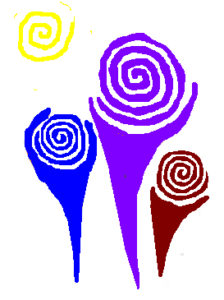 Crowdsourcing is an open, public call for contributions from anyone to talk about a pressing issue, offer advice or data or to help solve a problem or challenge. It’s an open-call brainstorming session. While the term crowdsourcing was popularized online to describe Internet-based activities, there are examples of projects that, in retrospect, can also be described as crowdsourcing, without the Internet.
Crowdsourcing is an open, public call for contributions from anyone to talk about a pressing issue, offer advice or data or to help solve a problem or challenge. It’s an open-call brainstorming session. While the term crowdsourcing was popularized online to describe Internet-based activities, there are examples of projects that, in retrospect, can also be described as crowdsourcing, without the Internet.
For instance, in, 1848 Matthew Fontaine Maury, an American astronomer, United States Navy officer, historian, oceanographer, meteorologist, cartographer and more, distributed 5000 copies of his Wind and Current Charts free of charge on the condition that sailors returned a standardized log of their voyage to the U.S. Naval Observatory. By 1861, he had distributed 200,000 copies free of charge, on the same conditions. The data the sailors provided was used to develop charts for all the major trade routes.
The Smithsonian Meteorological Project was started by the Smithsonian’s first Secretary, Joseph Henry, and in 1849 he set up a network of some 150 volunteer weather observers all over the USA. Henry used the telegraph to gather volunteers’ data and create a large weather map, making new information available to the public daily. For instance, volunteers tracked a tornado passing through Wisconsin and sent the findings via telegraph to the Smithsonian. Henry’s project is considered the origin of what later became the National Weather Service. Within a decade, the project had more than 600 volunteer observers and had spread to Canada, Mexico, Latin America, and the Caribbean. These remote volunteers submitted monthly reports that were then analyzed by a professor at Lafayette College in Easton, Pennsylvania, and published in 1861 in the first of a two- volume compilation of climatic data and storm observations based on the volunteers’ reports.
The Smithsonian information in this blog is from a 2011 article “Smithsonian Crowdsourcing Since 1849!” by Elena Bruno, a Smithsonian intern who conducted research into how crowdsourcing could be integrated into mobile applications and making the Smithsonian experience, for those inside our Institution and beyond, more valuable and engaging.
I miss the crowdsourcing feel of the 1990s Internet, particularly via USENET newsgroups. My favorite was soc.org.nonprofit, for the discussion of nonprofit organization management issues. It was amazing to see someone post a question about how to reach a particular audience or databases or whatever and see knowledgeable people offer helpful advice on the subject within days, sometimes hours. There was lots of help and very little posturing – or trolls. Good times. Read more about the Early History of Nonprofits and the Internet (before 1996).
 Online crowdsourcing is one example of virtual volunteering. Wikipedia is probably the most well-known example of online crowdsourcing, but there are many more. For advice on working with remote volunteers, or using the Internet to support and involve volunteers, whether in crowdsourcing initiatives or in more formal, higher-responsibility volunteering, check out The Last Virtual Volunteering Guidebook. It’s written by myself and Susan J. Ellis, and is the result of many, many years of research and experience.
Online crowdsourcing is one example of virtual volunteering. Wikipedia is probably the most well-known example of online crowdsourcing, but there are many more. For advice on working with remote volunteers, or using the Internet to support and involve volunteers, whether in crowdsourcing initiatives or in more formal, higher-responsibility volunteering, check out The Last Virtual Volunteering Guidebook. It’s written by myself and Susan J. Ellis, and is the result of many, many years of research and experience.
